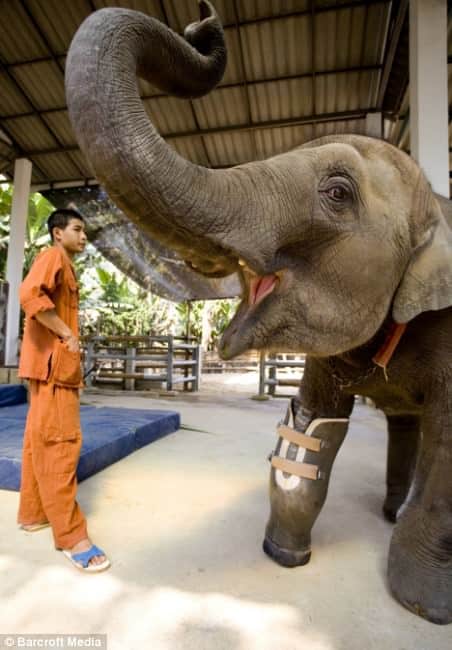Treatment for a poor elephant with a missing leg
It’s a heart-wrenching sight to see an elephant with a missing leg, as it’s a clear indication of how humans have impacted the lives of these gentle giants. But it’s also heartening to see the determination and resilience of these animals, who can still find joy in being reunited with their owners despite the pain and suffering they endure.
The first step in treating an elephant with a missing leg is to stabilize the animal and manage its pain. The elephant needs to be kept in a safe and comfortable environment, away from other animals that may stress it out. The veterinarian will likely administer pain medication and antibiotics to prevent infection.

After stabilizing the elephant, the next step is to assess its mobility and determine if a prosthetic leg is feasible. Prosthetics for elephants are complex and expensive, but they can greatly improve the animal’s quality of life. The veterinarian will work with a team of specialists to design and fit a prosthetic leg that is appropriate for the elephant’s size and weight.
Physical therapy and rehabilitation are also crucial components of the treatment plan. The elephant will need to learn how to use its new leg and regain strength in its muscles. Rehabilitation may involve exercises such as swimming, walking on a treadmill, and using a special harness to support the elephant’s weight.

In addition to physical treatment, emotional support is also important for the elephant’s recovery. Being separated from its herd or family can cause significant distress for an elephant, so it’s important to provide social interaction and companionship. This can be done by introducing the elephant to other elephants, or by providing a caretaker who can spend time with the animal and provide comfort.
Addressing the underlying cause of the elephant’s injury is equally important. In many cases, elephants are injured due to human activity, such as poaching or habitat destruction. Thus, addressing these issues can help prevent future injuries and protect the elephant’s habitat.
Treating an elephant with a missing leg is a long and challenging process that requires the expertise of a team of professionals. However, seeing the elephant’s joy at being reunited with its owner despite the pain it’s experiencing makes the effort all the more worthwhile.
Moreover, treating an elephant with a missing leg is not just about providing physical treatment, but also about giving the animal a chance to lead a fulfilling life. It’s vital to ensure that the elephant has access to a natural and stimulating environment, as well as opportunities for social interaction and mental stimulation.
In conclusion, it’s important to take a holistic approach when treating an elephant with a missing leg, addressing both the physical and emotional needs of the animal. With the right care and support, these amazing creatures can learn to adapt to their new circumstances and continue to thrive.



